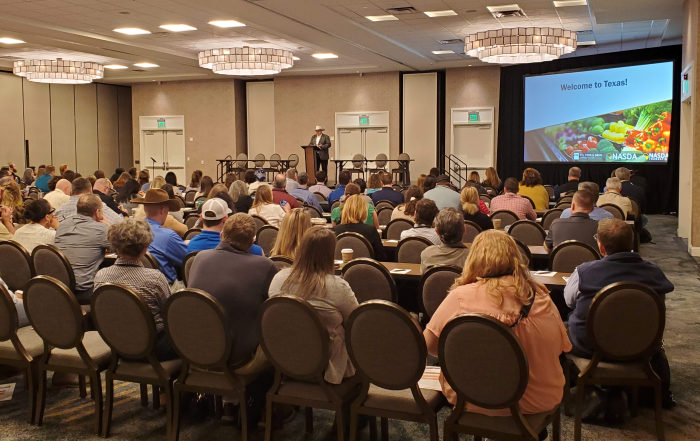The NASDA Foundation Food Safety team successfully hosted the Eighth Produce Safety Consortium in Fort Worth, Texas, from March 17-20, 2025. This year’s Produce Safety Consortium was attended by 46 state programs as well as their university extension partners. The consortium’s purpose is to bring a wide array of presentations, resources and opportunities to share and collaborate with federal, state, university and organizational partners in produce safety. Our FDA partners were unfortunately unable to attend.
Contact Information
During the general session, the attendees heard from their colleagues about a variety of different topics. The consortium had two industry presentations, one from UNFI on their role in produce safety and how produce moves through the distribution system and the other from International Fresh Produce Association on their role in domestic and international produce safety. The Foundation team also had a state panel on the importance of qualified exempt farms, the impact of these farms on the market and the importance of reaching these farms through education and collaboration with other programs within the state and community. Another panel focused on how states and extension are evaluating farms against Subpart E harvest and post-harvest provisions. These presentations centered on what issues inspectors are seeing on the farm when it pertains to water sources and how the states/extensions are educating farmers.
At this year’s consortium, attendees participated in three topical breakouts. GS1 US delivered the “Salad Experience,” which was an interactive workshop on the FSMA 204 Traceability Rule. The attendees experienced the process of tracking tomatoes and lettuce through the supply chain and collecting and sharing data requirements needed for compliance with the rule.


The second topical breakout was a pre-harvest water breakout by university colleagues, which included round table exercises to better understand pre-harvest water hazard identification and categorization. The final breakout included a discussion-based breakout that attendees, working in groups, provided state and other stakeholder input on the possible objectives for the next state produce notice of funding opportunity.
The attendees of the project investigator/managers meeting appreciated the opportunity for candid discussion among their colleagues as their programs are in the final year of the current grant needing to make plans for the future of their programs. Next year’s consortium may need to be a virtual program due to potential funding conditions. All the final presentations and resources can be found on the consortium event website.

